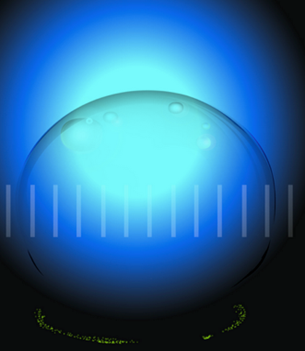For the first time, the National Institute of Standards and Technology (NIST) measured the volume of individual droplets <100 trillionths of a liter with an uncertainty of <1%, a tenfold improvement.
Measuring the volume, motion, and contents of microscopic droplets is vital for studying airborne viruses spread, how clouds reflect sunlight, how inkjet printers create finely detailed patterns, and how soda bottle fragments into nanoscale plastic particles that pollute oceans. However, the accuracy of optical microscopy was limited in how well image analysis can locate the boundary between the edge of a droplet and the surrounding space.
NIST researchers developed new standards and calibrations for the instruments to improve optical microscope accuracy. They devised a system in which they could simultaneously measure the volume of microdroplets in flight using microscopy and gravimetry. Gravimetry measures volume by weighing the mass of many microdroplets that accumulate in a container.
Making several improvements meant that optical microscopy resolved the volume of microdroplets to one trillionth of a liter. The researchers noted that the standards and calibrations are practical and can be applied to many optical microscopes employed in basic and applied research. In collaboration with the University of Maryland in College Park, the NIST researchers reported the findings online on December 20th in Analytical Chemistry.
Using their newly developed method and an illumination system that is faster than the one employed by the team, scientists would have the capability of measuring the volume, motion, and contents of a spray or cloud of microdroplets, the researchers said. Such measurements could play a key role in future studies for epidemiological, environmental, and industrial applications.

